
Page contents
- 1 Hip dysplasia in children - causes of the disease
- 2 Symptoms - photo
- 3 Diagnosis
- 4 Treatment of hip dysplasia in children
- 5 Massage
- 6 Operations
- 7 Rehabilitation period
Disturbance of normal development of hip joints in a child that manifests itselfstill in utero, is called dysplasia of hip joints in children. Most often this is expressed in the insufficient level of formation of the joint tissue.
It is extremely important to note this problem at the initial stage of its manifestation, as its further development can lead to an irreversible process and consequences, from which it will be very difficult to get rid of. Severe forms of this disease can make a child disabled.
This is due to the fact that this disease causes:
- Disproportionately the development of the lower limbs in comparison with the upper
- The legs become very weak and do not withstand large loads
- The probability of getting a dislocation or even fracture becomes much larger
- In appearance, there are significant changes: violationbody posture, lack of fast walking, jumping or climbing when walking
- Long stay in a vertical position causes pain
Thus, the susTavi of the lower extremities can not fully fulfill their basic functions.
Hip dysplasia in children - causes of
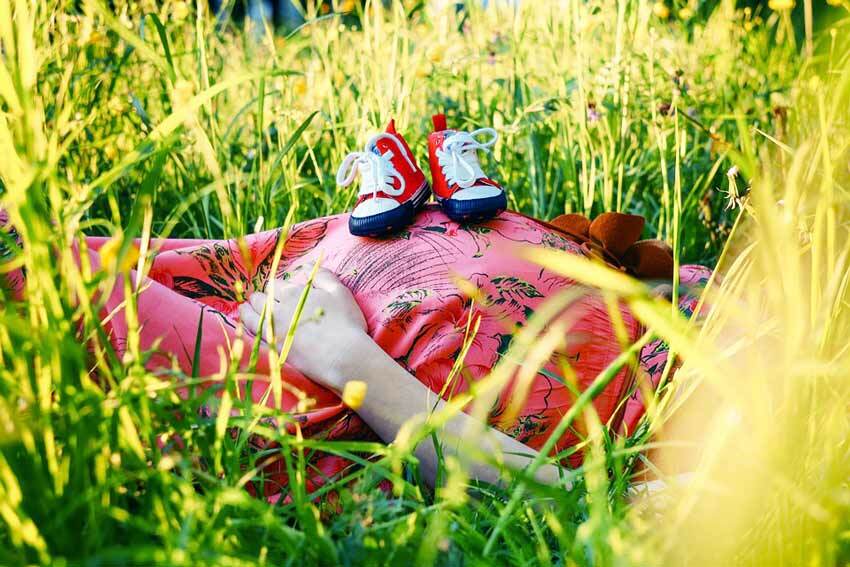 What causes similar anomalies in an unborn baby?
What causes similar anomalies in an unborn baby?
Reasons:
- First of all, hereditary factor
- Mother has various infectious and female diseases
- Development of pathology in the fetus during pregnancy
- Prematurity: most organs in such children are not fully developed
- Incorrect fetal position in the womb
- Small fetal volumewater
- High fetal weight
- Breaking the hormonal cycle: the presence in the body of a large amount of a certain hormone leads to a general weakness of the muscle system. This is especially true for progesterone.
- Bad environmental situation
- Severe working and rest conditions
- Strict swaddling of a child as a child
- Narrow footwear for a child. This is the main cause of this disease.
It is necessary to closely monitor your child and if you have any suspicions of developing such a disease, consult a doctor immediately. Only he can make an accurate diagnosis with the help of a thorough examination using special equipment.
Symptoms - photo
Many orthopedists are inspecting infants in the hospital. Hip dysplasia in children under one year is determined by the following features:
-
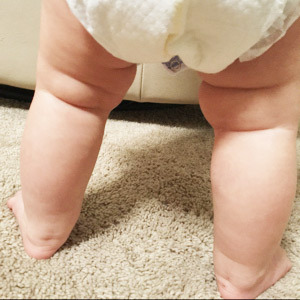 Absence of symmetry of inguinal, gluteal and popliteal folds on the skin
Absence of symmetry of inguinal, gluteal and popliteal folds on the skin - "Shortened hip" syndrome
- Presence of a peculiar click: the base of the thigh rotates in the hollow and rotates in the hollow and produces an uncharacteristic sound
- Appearance of painfulsensations in the child when the doctor tries to spread his legs to the side. Pregnant children are at risk. The correct position of the feet is considered an angle of up to 90 degrees.
- The child's lower limbs are constantly on the move and are able to perform uncharacteristic movements and evolve in different directions.
- . Adult children have a swaying gait, walk often on their toes, sway from side to side. All their appearance, they show that it is not possible to step on the heels because of the pain.
If the parents notice at least one of these signs, it is necessary to show the child to the doctor. The earlier the examination is performed and the appropriate treatment is prescribed, the greater the likelihood of a positive outcome.
Diagnostics
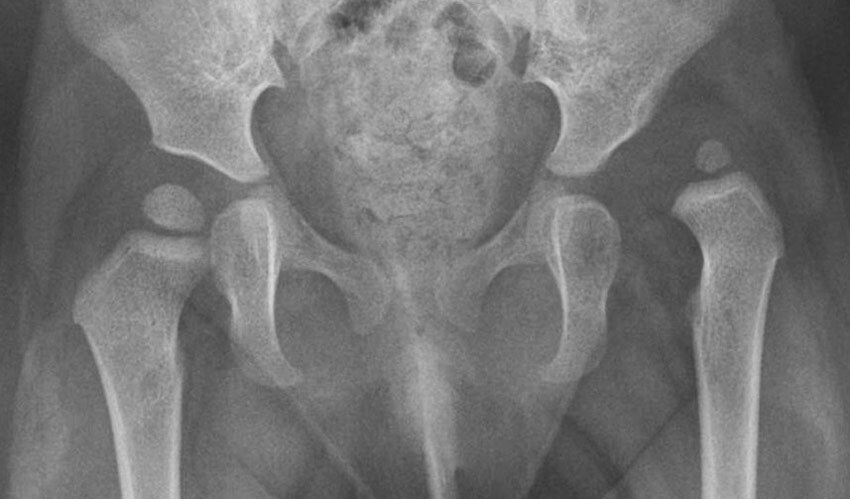 Primary examination of the limbs in an orthopedist should be performed at the age of the child up to 1 month. This is due to the fact that the child does not walk yet, and there is no full load on his legs. Muscular tissue is still soft enough and can change.
Primary examination of the limbs in an orthopedist should be performed at the age of the child up to 1 month. This is due to the fact that the child does not walk yet, and there is no full load on his legs. Muscular tissue is still soft enough and can change.
At the older age, it is difficult to determine the presence of this disease by external symptoms, since its external manifestations are absent. Signs of dysplasia of the hip joints in children after a year become frequent dislocations, child walking on socks, club foot when walking.
In addition, it is necessary to conduct X-ray and ultrasonography. The following defects can be detected in the pictures:
- Changing the function of the acetabulum
- Insufficient volume of development of bones and cartilage in the extremities
- Uncharacteristic length of ligaments or muscle capsules
- Frequent dislocations of the hip bone
- Changing the position of the bone in the joint
In addition, doctors distinguish several stages of dysplasiahip joints in children: preluxation, subluxation and dislocation.
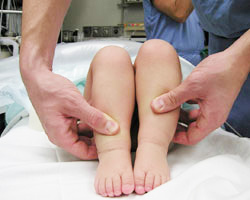 At the first stage, there is a slight change in the development of the joint in the acetabulum. Usually this stage is manifested in children in the hospital.
At the first stage, there is a slight change in the development of the joint in the acetabulum. Usually this stage is manifested in children in the hospital.
In the second stage, a general change in the hip base is revealed. In this case, it is located in the same place: in the articular bag. These changes lead to a general disruption of the motor functions of the thigh and leg.
In the last stage, the head of the femur is displaced beyond the acetabulum. Thus, peculiar voids are formed, which are filled with connective tissue. This stage is considered one of the most difficult, and it is very rarely treated. Usually in this case only the surgical operation of the patient will help.
Treatment of hip dysplasia in children
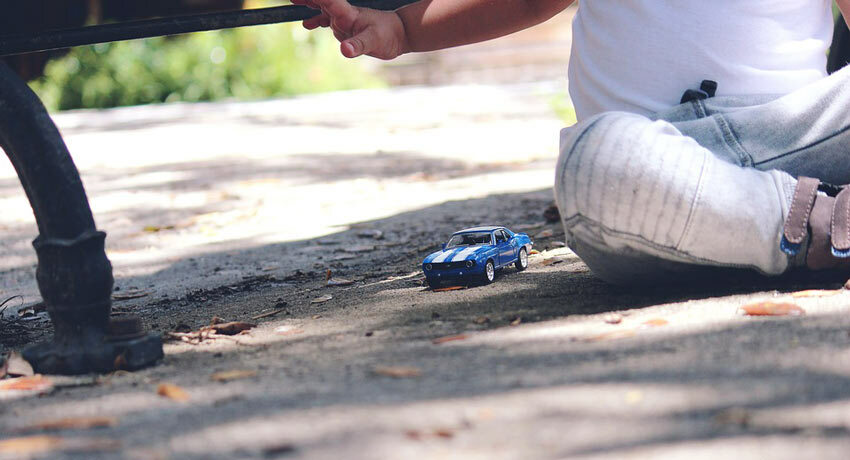 As mentioned above, only an orthopedic doctor can diagnose. When confirming the diagnosis, do not despair, you must immediately proceed to treatment. How long will it take, is it necessary to intervene, or can drugs be dealt with? This can only tell the attending physician. It should be noted that these factors completely depend on the level of damage.
As mentioned above, only an orthopedic doctor can diagnose. When confirming the diagnosis, do not despair, you must immediately proceed to treatment. How long will it take, is it necessary to intervene, or can drugs be dealt with? This can only tell the attending physician. It should be noted that these factors completely depend on the level of damage.
First of all, all types of treatment refer to strict fixation of the head of the hip joint of the child. This is necessary in order for it to move less, damaging adjacent areas. In this case, the doctor superimposed the tire, used medical stirrups, as well as compression long pants. To eliminate hip dysplasia in children up to a year, either a wide swaddling or completely eliminating it is prescribed.
After the measures taken, it is necessary to carry out a set of measures aimed at strengthening the ligaments, joints and muscles of the lower limbs. Usually in this case, the following measures are applied:
-
 Massage for hip dysplasia in children
Massage for hip dysplasia in children - Physiotherapy for hip dysplasia in children .It will help not only to strengthen the muscles, but also to contribute to the proper distribution of the load and development of the respiratory system.
- . Gymnastic procedures.
- . Activities in the
- pool. Occupations with thermal effect: ozokerite and paraffin technologies are used in this method.
- Physiotherapeutic procedures
Let's talk about these methods in more detail.
Massage
First of all, massage is prescribed for hip dysplasia in children. It is carried out in the following ways: the child is laid on his back, and then rolled on his tummy.
Perform massage, light movements starting with strokes. Next, you need to stretch your limbs well. In no case can this be done with force and pressure. Then go to the abdominal area. After that, they turn to the patient area, where an intensive massage is already performed using various technologies.
Lfk and exercises
Therapeutic physical training for dysplasia of the hip joints in children is aimed primarily at relieving tension and strengthening the muscles of the hip joint. It also helps to restore the motor activity of the damaged joint.
It can be used from the first days of a baby's life as an effect on the reflex zones of the lower extremities: parents gently stroke the foot and heel of the baby, and the response should be a reduction of the toes on the legs.
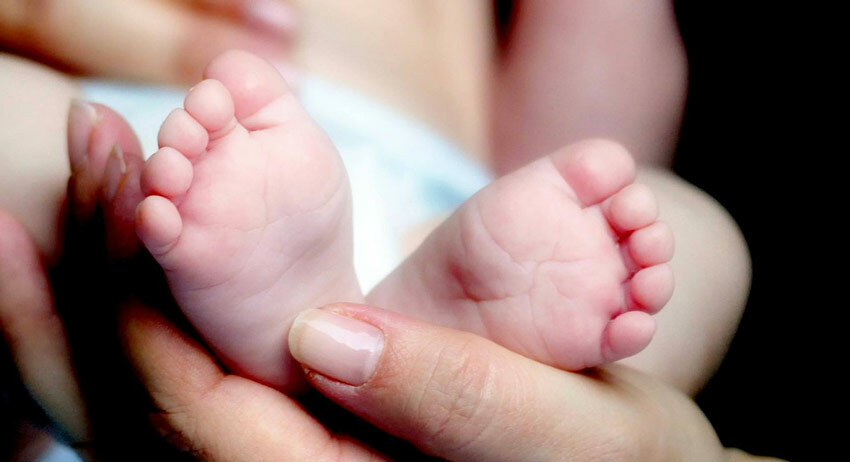
In addition, it is very useful to help the child develop early crawling. Parents can help their kid to master this difficult skill for him: to put his palm to the feet of the baby, so that the child pushes away from it and tries to move.
In addition, this exercise helps to strengthen the muscles of the arms and trunk. As a gymnastics, try gently, turn the child from back to tummy and back. Experts recommend using a roller made of a towel for these purposes.
Physiotherapy
The physiotherapy procedures for hip dysplasia in children from year to year include the use of: electrophoresis with a solution of calcium and chlorine;The use of ozocerite and paraffin for the conduct of medical procedures. All the above technologies are aimed at strengthening the joints and ligaments.
It should be remembered that physical therapy, massage and gymnastics for hip dysplasia in children are carried out exclusively under the supervision of a doctor.
At home, these procedures are categorically contraindicated. It is also necessary to completely exclude any kind of warming up of the sore spot at home. You can not only get a burn, but also harm your child.
In most cases, these measures lead to a positive outcome of treatment.
In this case, parents can only prepare the child for subsequent procedures and alleviate their suffering. You can do this with the following measures:
- Pillow Frame
- Rigid pants
- Stirrup Pavlik.

The first device is aimed at fixing the limbs in the required position with the exception of pain and discomfort to the child. Usually it is used for babies younger than a month.
Its basic parameters are different and selected exclusively by the doctor based on the size of the deformation and the individual characteristics of the child.
The next device is tight pants. They have the same effect as the previous device, but its difference is that the child's legs are fixed in the "frog" position, i. E.slightly bent and divorced. At present, many parents give preference to them, because they are convenient in everyday life and when they are worn the child does not have unpleasant sensations.
The last device, which I would like to say in more detail, is Pavlik's stirrups. They include an element such as a chest fixing corset with straps. It is necessary to ensure that the belt located on the trunk maintains the even position of the body and fits well on the skin without causing discomfort.
In addition, as already mentioned above for young children, a wide swaddling is used. It is aimed at covering the baby with a diaper and inserting soft pads between the legs of the baby. This method is considered very careful and humane, since a tight contraction at this age is not required.
Currently, most mothers, for their own comfort, convenience and the release of hands, use slings. Many of them do not think that this is also a very good method of treating this disease in young children.
In addition to humane methods, more radical ones are also used: surgical intervention. It is shown in those cases when there is a significant change in the functions of the legs, a dislocation or fracture, and also when more sparing did not give the desired result. Usually they are prescribed for dysplasia of the hip joints in children from year to year.
First of all, the child is prescribed a therapeutic massage. It is aimed at strengthening the muscles of the buttock zone and thigh.
Operations
The surgical intervention is performed using the following technologies:
-
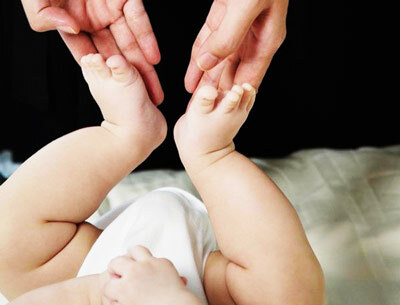 Use of osteotomy of the damaged area. It is aimed at changing the shape of the bones themselves. This procedure involves splitting the bone into two parts. Later, her contraction is done, and the patient goes home for rehabilitation. This method promotes better bone consolidation without any changes.
Use of osteotomy of the damaged area. It is aimed at changing the shape of the bones themselves. This procedure involves splitting the bone into two parts. Later, her contraction is done, and the patient goes home for rehabilitation. This method promotes better bone consolidation without any changes. - For equalizing the length of the legs, palliative interventions are used. This method is used only when the patient has indications for surgery, but it is not possible to conduct it. This happens as a result of such circumstances: age, serious illnesses, blood diseases, allergic reactions.
- In severe cases, the patient's zone changes to an implant.
After the procedures the legs of the baby are fixed with a special tire. Naturally the child will resist this, but it is necessary to explain that this is a forced measure. When the tire is applied, the optimal fusion of the damaged bones occurs, and the joints fall into place.
During rehabilitation, the child can move with his feet, but the necessary space and the correct position of the internal organs will remain in their original place. After healing by a doctor it will be recommended, for some time to wear tight stirrups, as well as cushions.
Rehabilitation period
This period of time is considered very important for proper healing, so the child must provide all the necessary conditions. Parents should know some rules that must be observed:
- When the child is on the back, his lower limbs should be free and be on weight. This helps to relieve tension and strain from the damaged area of the
- . When carrying the baby on your hands, make sure that it is facing the adult and his legs are around your body.
- . Any vertical loads should be eliminated: the minimum load will deform the correct position of the bone.
- driving for long distances in any case it is impossible to hold the child on hands or to put on the seat. For children, special chairs are provided in which the baby will sit comfortably.
- When placing the baby on the chair for feeding, you should put special rollers. It is best if they are made of a soft towel or a large pillow. So parents help the child's legs to be located in a position separated from each other.
Consequences of hip dysplasia in children
In the absence of hip dysplasia in children under one year, the possibility of its appearance, as well as the likelihood of complications in its treatment, is many times greater. With a qualified examination, timely treatment and properly performed care, the result will be only positive, and complications are minimal.
Usually the consequences of hip dysplasia in children are:
- poor posture
- often occurring pain during walking
- appearance at an early age of arthrosis



